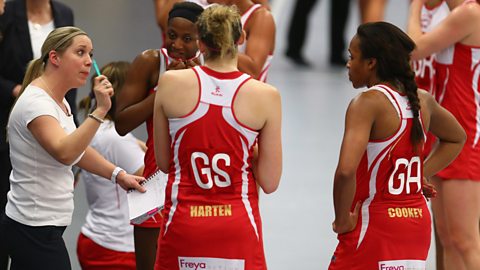Coaching through verbal guidance and feedback
Verbal guidance is given by an observer after watching your performance. For example:
- coaching points – given by the coach and relating to the technique of the performance
- feedback – from the coach
- peer feedback – from other performers
- questioning – by the coach so the performer is prompted to self-evaluateIdentifying your own strengths and areas for improvement.
Feedback needs to be constructiveLooks at strengths and weaknesses. Helps someone to improve rather than just highlighting faults. to help the performer to improve their skill. It also needs to be specific and accurate so the performer knows exactly what and how to improve. This requires coaches and athletes to understand and use the same language and terminology.
Verbal guidance may be given before, during or after practice and performance.
Netball example
| Unhelpful feedback | Constructive feedback |
| 'You need to pass the ball better next time.' | 'When you do a chest pass, you need to open your fingers wider to have more power and control.' |
| Unhelpful feedback | 'You need to pass the ball better next time.' |
|---|---|
| Constructive feedback | 'When you do a chest pass, you need to open your fingers wider to have more power and control.' |

Feedback given to netballers during a match interval
Advantages and disadvantages of verbal guidance
Advantages
- Good if clear, short and relevant.
- Use of key words can focus technique.
- Helpful accompaniment to visual guidance.
- Good for elite performers.
Disadvantages
- Learners can only remember a limited amount of spoken information.
- Needs to be simple and short for novices and younger performers.
- Difficult to communicate subtleties and complexities of tactics.